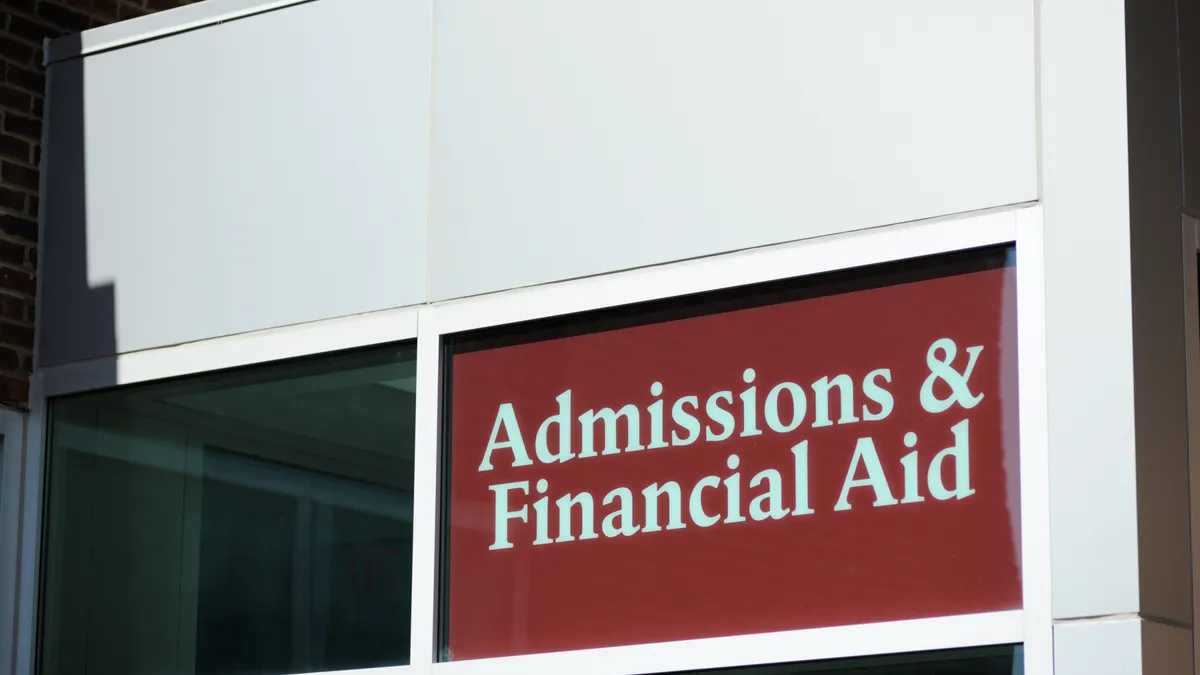Dive Brief:
- Selective colleges would struggle to create diverse student bodies if they could not consider race as an admissions factor, according to new modeling from the Georgetown University Center on Education and the Workforce.
- Georgetown CEW studied six scenarios. In four of them, colleges were not allowed to employ race-conscious admissions, which the U.S. Supreme Court is widely expected to restrict use of when it rules later this year in cases challenging the practice. In these CEW examples, colleges were extremely unlikely to put together a pool of admitted students that match the demographics of the nation's graduating high school class.
- The center did not incorporate preferences toward athletes or legacy admissions in its analysis. But it noted these two practices benefit White, wealthy applicants and should selective colleges continue them, their classes would be even less diverse.
Dive Insight:
The Supreme Court in October heard oral arguments in two lawsuits challenging race-conscious policies at Harvard University and the University of North Carolina at Chapel Hill. A decision is expected before the high court recesses toward the end of June.
Pundits widely predict the high court will limit race-conscious admissions in some fashion, as the conservative justices who control the majority have publicly signaled their skepticism with such practices.
A ruling against race-conscious admissions would only directly apply to a small slice of colleges, as most institutions admit a majority of applicants. But admissions professionals still fear the high-profile decision would signal to disadvantaged students they aren’t welcome in higher education.
Georgetown CEW modeled six scenarios in which researchers filled 290,000 theoretical seats at nearly 200 highly selective colleges — which the center determined as institutions that generally admit half of applicants or fewer.
Researchers found the most effective way of bolstering diversity at selective colleges was to consider race in the admissions process. They examined a model that exclusively considered academic merit, as well as ones that incorporated socioeconomic status, which some affirmative action critics argue is a better metric to target and enroll historically marginalized students. Students from poor socioeconomic backgrounds are underrepresented at selective colleges across most racial and ethnic groups, according to Georgetown CEW.
However, accounting for applicants’ wealth would only partially “claw back,” maintain or improve student body diversity, depending on the scenario — and only for Hispanic or Black students, the center found. Shares of American Indian, Alaska Native, Native Hawaiian and Pacific Islander students drop under every model that is class conscious.
If the high court bars race-conscious practices, then in the best scenario, representation of Black and Hispanic students would slightly increase at selective colleges, the report states. But they would still remain deeply underrepresented at selective colleges relative to their share of the graduating high school class.
“Our models make one thing very clear: the most effective way of increasing socioeconomic diversity at selective colleges is to consider race in the admissions process, not to ignore it,” Georgetown CEW Director Anthony Carnevale said in a statement. “There’s a prevailing idea that race-conscious admissions practices only privilege the richest members of underrepresented racial/ethnic groups, but that does not hold up under scrutiny.”










